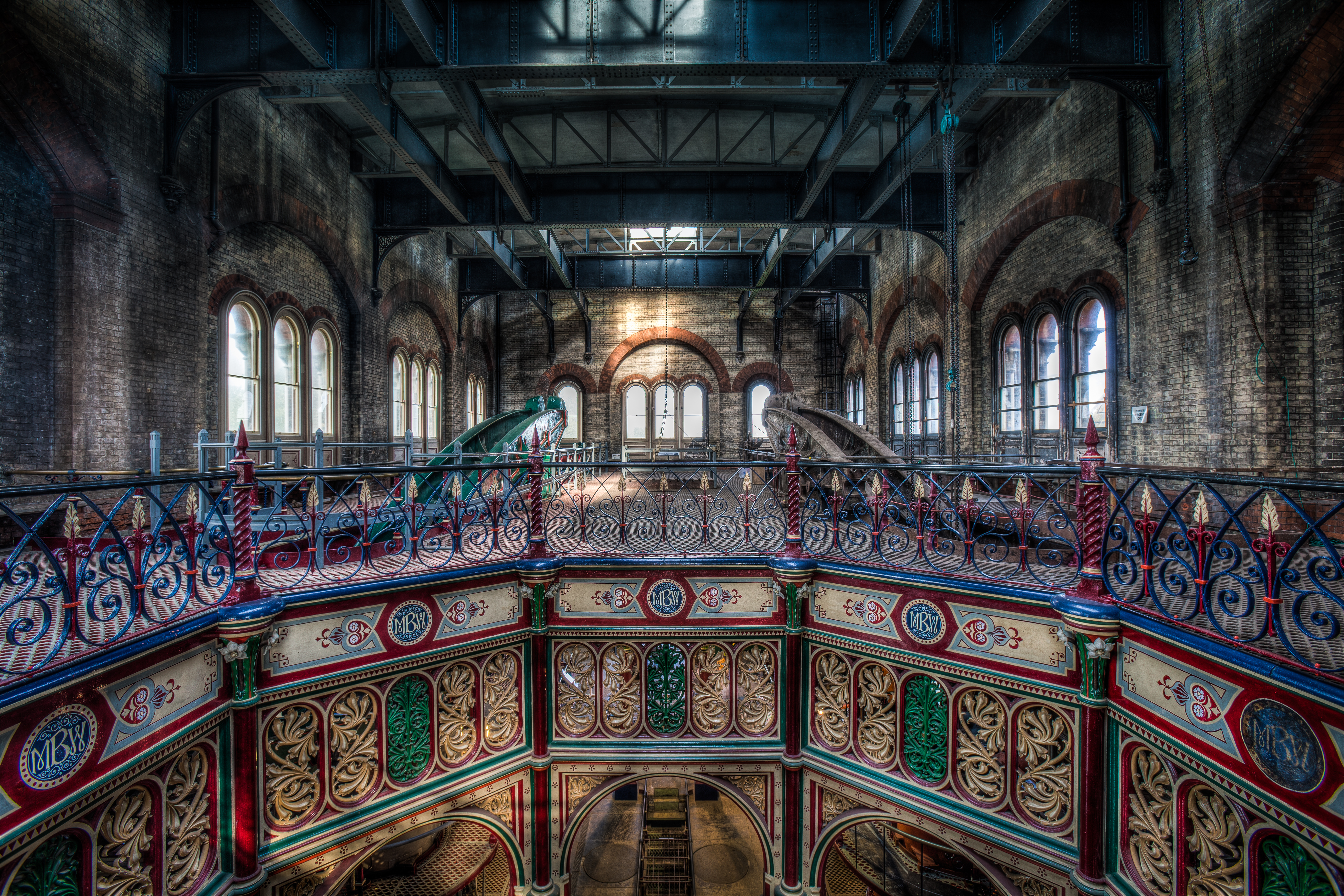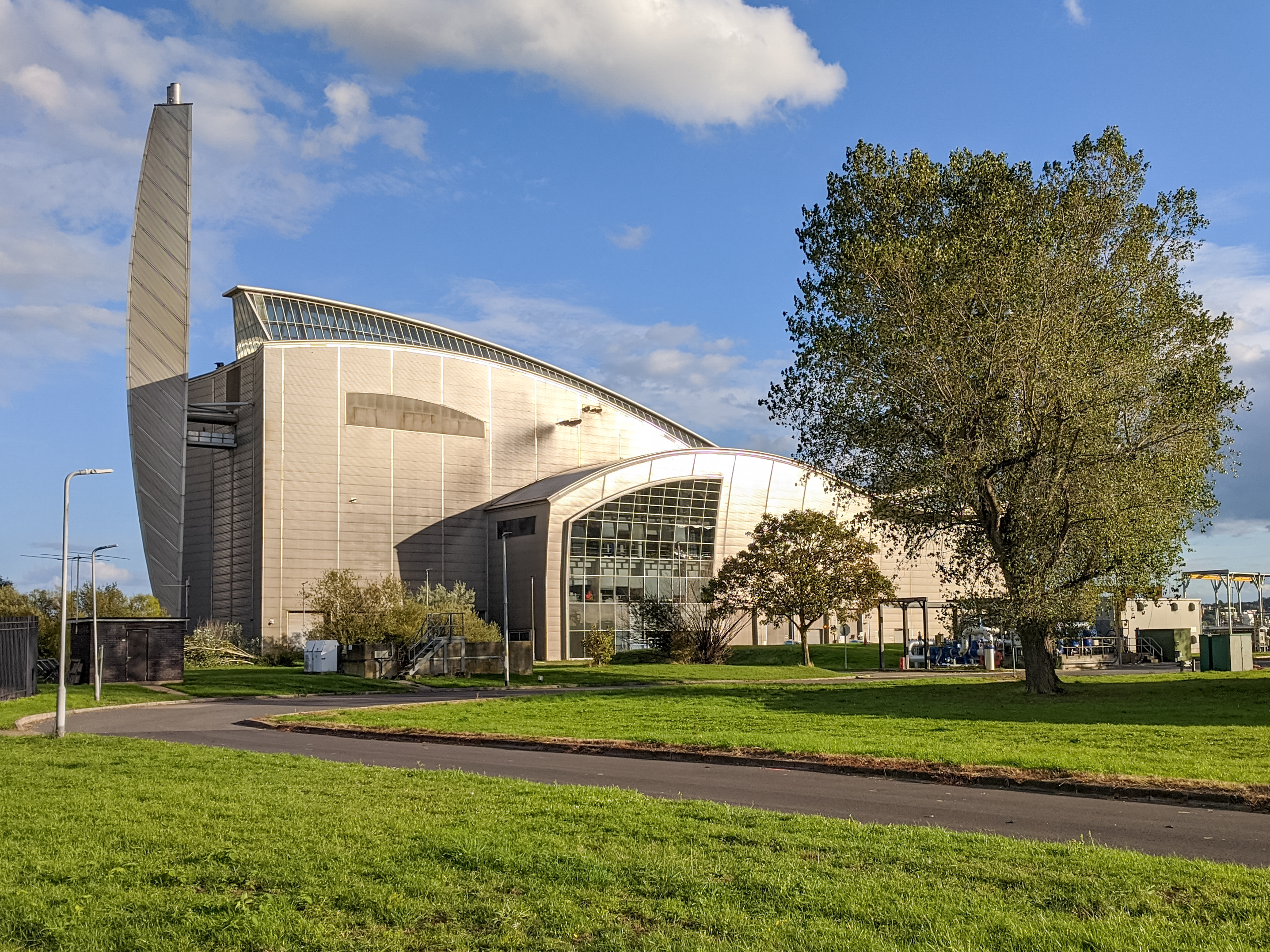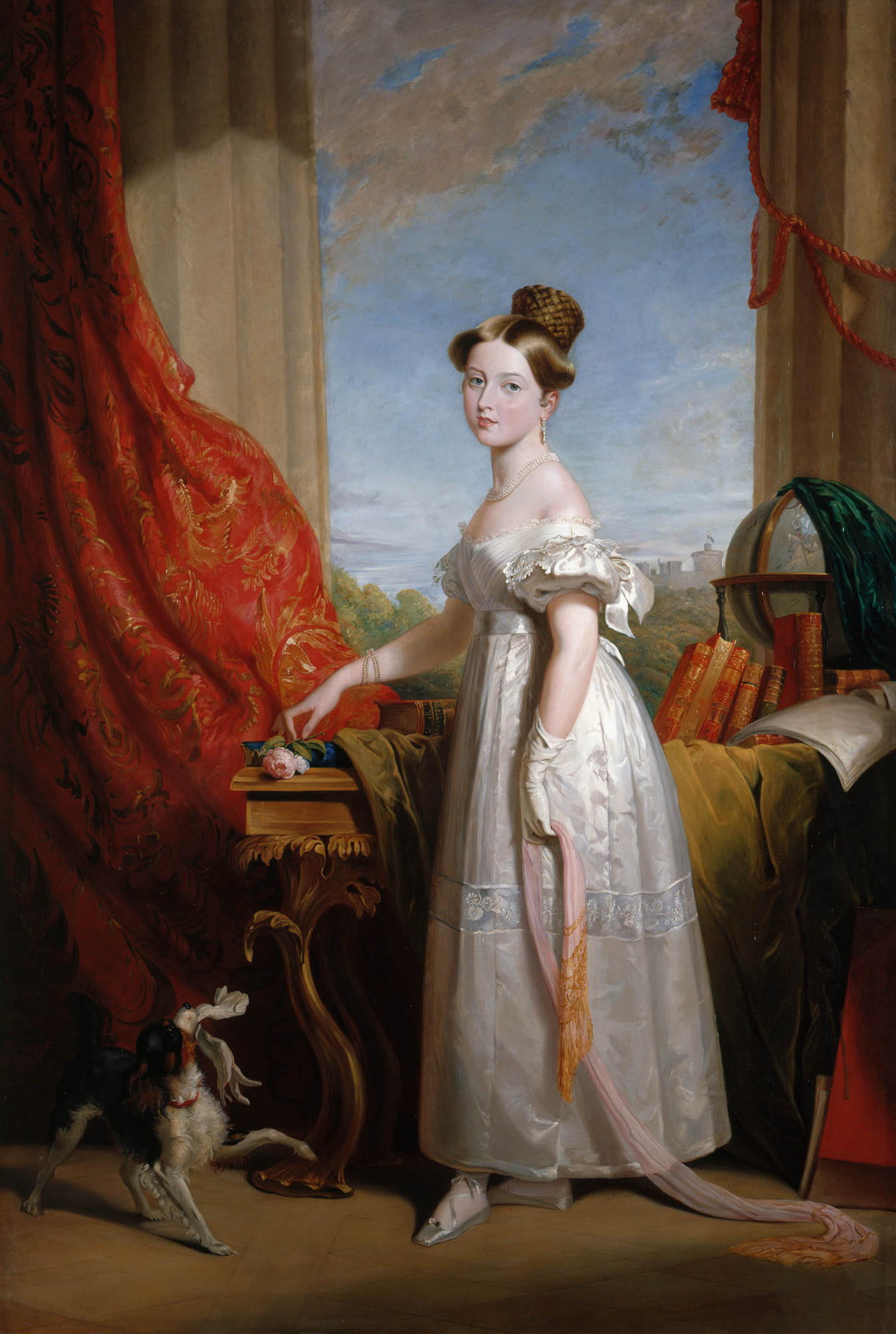|
Crossness Pumping Station
The Crossness Pumping Station is a former sewage pumping station designed by the Metropolitan Board of Works's chief engineer Sir Joseph Bazalgette and architect Charles Henry Driver. It is located at Crossness Sewage Treatment Works, at the eastern end of the Southern Outfall Sewer and the Ridgeway path in the London Borough of Bexley. Constructed between 1859 and 1865 by William Webster, as part of Bazalgette's redevelopment of the London sewerage system, it features spectacular ornamental cast ironwork, that Nikolaus Pevsner described as "a masterpiece of engineering – a Victorian cathedral of ironwork". It is adjacent to Erith Marshes, a grazing marsh, the northern part of which is designated as Crossness Nature Reserve. This provides a valuable habitat for creatures ranging from moths to small amphibians and water voles. Opening The Southern Outfall Works, as the complex was originally called, was officially opened on 4 April 1865, by Edward, Prince of Wales, atte ... [...More Info...] [...Related Items...] OR: [Wikipedia] [Google] [Baidu] |
Crossness Sewage Treatment Works
The Crossness Sewage Treatment Works is a sewage treatment plant located at Crossness in the London Borough of Greenwich. It was opened in 1865 and is Europe's second largest sewage treatment works, after its counterpart Beckton Sewage Treatment Works located north of the river. Crossness treats the waste water from the Southern Outfall Sewer serving South and South East London, and is operated by Thames Water. The treated effluent from the plant is discharged into the River Thames at the eastern end of the site. History As originally conceived the works comprised reservoirs covering 2.6 hectares designed to retain six hours’ flow of sewage. No sewage treatment was provided and the sewage was discharged untreated into the River Thames on the ebb tide. Following the ''Princess Alice'' disaster in 1878 a Royal Commission was appointed in 1882 to examine Metropolitan Sewage Disposal. It recommended that a precipitation process should be deployed to separate solids from the liqu ... [...More Info...] [...Related Items...] OR: [Wikipedia] [Google] [Baidu] |
European Water Vole
The European water vole or northern water vole (''Arvicola amphibius''), is a semi-aquatic rodent. It is often informally called the water rat, though it only superficially resembles a true rat. Water voles have rounder noses than rats, deep brown fur, chubby faces and short fuzzy ears; unlike rats their tails, paws and ears are covered with hair. In the wild, on average, water voles only live about five months. Maximum longevity in captivity is two and a half years. Appearance Water voles reach in length, plus a tail which is about half the length of the body. Weights reported for adults are variable. It is possible for large, optimal adults to weigh as much as However, these are peak weights. Elsewhere, the mean body mass has been reported as , although this figure includes immature water voles. The minimum weight to successfully breed as well as to survive winter is reportedly in females and in males.Yavuz, Güliz, Ercüment Çolak, and Teoman Kankılıç. ''Investigat ... [...More Info...] [...Related Items...] OR: [Wikipedia] [Google] [Baidu] |
Alexandra Of Denmark
Alexandra of Denmark (Alexandra Caroline Marie Charlotte Louise Julia; 1 December 1844 – 20 November 1925) was Queen of the United Kingdom and the British Dominions, and Empress of India, from 22 January 1901 to 6 May 1910 as the wife of King-Emperor Edward VII. Alexandra's family had been relatively obscure until 1852, when her father, Prince Christian of Schleswig-Holstein-Sonderburg-Glücksburg, was chosen with the consent of the major European powers to succeed his second cousin Frederick VII as king of Denmark. At the age of sixteen Alexandra was chosen as the future wife of Albert Edward, Prince of Wales, the son and heir apparent of Queen Victoria. The couple married eighteen months later in 1863, the year in which her father became king of Denmark as Christian IX and her brother was appointed king of Greece as George I. Alexandra was Princess of Wales from 1863 to 1901, the longest anyone has ever held that title, and became generally popular; her style of dres ... [...More Info...] [...Related Items...] OR: [Wikipedia] [Google] [Baidu] |
Edward VII
Edward VII (Albert Edward; 9 November 1841 – 6 May 1910) was King of the United Kingdom of Great Britain and Ireland and Emperor of India, from 22 January 1901 until his death in 1910. The second child and eldest son of Queen Victoria and Prince Albert of Saxe-Coburg and Gotha, and nicknamed "Bertie", Edward was related to royalty throughout Europe. He was Prince of Wales and heir apparent to the British throne for almost 60 years. During the long reign of his mother, he was largely excluded from political influence and came to personify the fashionable, leisured elite. He travelled throughout Britain performing ceremonial public duties and represented Britain on visits abroad. His tours of North America in 1860 and of the Indian subcontinent in 1875 proved popular successes, but despite public approval, his reputation as a playboy prince soured his relationship with his mother. As king, Edward played a role in the modernisation of the British Home Fleet and the re ... [...More Info...] [...Related Items...] OR: [Wikipedia] [Google] [Baidu] |
Albert, Prince Consort
Prince Albert of Saxe-Coburg and Gotha (Franz August Karl Albert Emanuel; 26 August 1819 – 14 December 1861) was the consort of Queen Victoria from their marriage on 10 February 1840 until his death in 1861. Albert was born in the Saxon duchy of Saxe-Coburg-Saalfeld to a family connected to many of Europe's ruling monarchs. At the age of twenty, he married his first cousin Victoria; they had nine children. Initially he felt constrained by his role as consort, which did not afford him power or responsibilities. He gradually developed a reputation for supporting public causes, such as educational reform and the abolition of slavery worldwide, and was entrusted with running the Queen's household, office, and estates. He was heavily involved with the organisation of the Great Exhibition of 1851, which was a resounding success. Victoria came to depend more and more on Albert's support and guidance. He aided the development of Britain's constitutional monarchy by persuadin ... [...More Info...] [...Related Items...] OR: [Wikipedia] [Google] [Baidu] |
Queen Victoria
Victoria (Alexandrina Victoria; 24 May 1819 – 22 January 1901) was Queen of the United Kingdom of Great Britain and Ireland from 20 June 1837 until her death in 1901. Her reign of 63 years and 216 days was longer than that of any previous British monarch and is known as the Victorian era. It was a period of industrial, political, scientific, and military change within the United Kingdom, and was marked by a great expansion of the British Empire. In 1876, the British Parliament voted to grant her the additional title of Empress of India. Victoria was the daughter of Prince Edward, Duke of Kent and Strathearn (the fourth son of King George III), and Princess Victoria of Saxe-Coburg-Saalfeld. After the deaths of her father and grandfather in 1820, she was raised under close supervision by her mother and her comptroller, John Conroy. She inherited the throne aged 18 after her father's three elder brothers died without surviving legitimate issue. Victoria, a constitu ... [...More Info...] [...Related Items...] OR: [Wikipedia] [Google] [Baidu] |
James Watt
James Watt (; 30 January 1736 (19 January 1736 Old Style and New Style dates, OS) – 25 August 1819) was a Scottish people, Scottish invention, inventor, mechanical engineer, and chemist who improved on Thomas Newcomen's 1712 Newcomen steam engine with his Watt steam engine in 1776, which was fundamental to the changes brought by the Industrial Revolution in both his native Great Britain and the rest of the world. While working as an instrument maker at the University of Glasgow, Watt became interested in the technology of steam engines. He realised that contemporary engine designs wasted a great deal of energy by repeatedly cooling and reheating the cylinder (engine), cylinder. Watt introduced a design enhancement, the Watt steam engine#Separate condenser, separate condenser, which avoided this waste of energy and radically improved the power, efficiency, and cost-effectiveness of steam engines. Eventually, he rotative beam engine, adapted his engine to produce rotary motio ... [...More Info...] [...Related Items...] OR: [Wikipedia] [Google] [Baidu] |
Illustrated London News
''The Illustrated London News'' appeared first on Saturday 14 May 1842, as the world's first illustrated weekly news magazine. Founded by Herbert Ingram, it appeared weekly until 1971, then less frequently thereafter, and ceased publication in 2003. The company continues today as Illustrated London News Ltd, a publishing, content, and digital agency in London, which holds the publication and business archives of the magazine. History 1842–1860: Herbert Ingram ''The Illustrated London News'' founder Herbert Ingram was born in Boston, Lincolnshire, in 1811, and opened a printing, newsagent, and bookselling business in Nottingham around 1834 in partnership with his brother-in-law, Nathaniel Cooke.Isabel Bailey"Ingram, Herbert (1811–1860)" ''Oxford Dictionary of National Biography'', Oxford University Press, 2004 accessed 17 September 2014] As a newsagent, Ingram was struck by the reliable increase in newspaper sales when they featured pictures and shocking stories. Ingram ... [...More Info...] [...Related Items...] OR: [Wikipedia] [Google] [Baidu] |
Warren Stormes Hale
Warren Stormes Hale (1791–1872) was Lord Mayor of London and founder of the City of London School. Early life He was born on 2 February 1791, was orphaned and became an apprentice candlemaker or chandler; he was later twice Master of the Tallow Chandlers' Company. Career He was elected to the Common Council of the City of London in 1825, as an Alderman in 1856. he later became Sheriff in 1858 and Lord Mayor in 1864. He is regarded as the second founder of the City of London School, responsible for using the surplus from the bequest of its original founder, John Carpenter. Death He died on 23 August 1872 and is buried at Highgate Cemetery Highgate Cemetery is a place of burial in north London, England. There are approximately 170,000 people buried in around 53,000 graves across the West and East Cemeteries. Highgate Cemetery is notable both for some of the people buried there as ... (West). Sources Lord Mayors, Aldermen and Common Councilmen in the Victorian City of L ... [...More Info...] [...Related Items...] OR: [Wikipedia] [Google] [Baidu] |
William Thomson (bishop)
William Thomson, (11 February 1819 – 25 December 1890) was an English church leader, Archbishop of York from 1862 until his death. Biography Early life He was born the eldest son of John Thompson icof Kelswick House, near Whitehaven, Cumberland, and educated at Shrewsbury School and at The Queen's College, Oxford, of which he became a scholar. He took his B.A. degree in 1840, and was soon afterwards made fellow of his college. He was ordained in 1842, and worked as a curate at Cuddesdon. In 1847 he was made tutor of his college, and in 1853 he delivered the Bampton lectures, his subject being ''The Atoning Work of Christ viewed in Relation to some Ancient Theories''. These thoughtful and learned lectures established his reputation and did much to clear the ground for subsequent discussions on the subject. Career Thomson's activity was not confined to theology. He was made fellow of the Royal Society and the Royal Geographical Society. He also wrote a very popular ''Ou ... [...More Info...] [...Related Items...] OR: [Wikipedia] [Google] [Baidu] |
Charles Longley
Charles Thomas Longley (28 July 1794 – 27 October 1868) was a bishop in the Church of England. He served as Bishop of Ripon, Bishop of Durham, Archbishop of York and Archbishop of Canterbury from 1862 until his death. Life He was born at Rochester, Kent, the fifth son of the late John Longley, Recorder of Rochester, and educated at Westminster School and Christ Church, Oxford, where he matriculated in 1812, graduating B.A. 1815 ( M.A. 1818), B.D. & D.D. 1829. At Christ Church, Longley was reader in Greek 1822, tutor and censor 1825–8, and proctor 1827. He was ordained in 1818, and was appointed vicar of Cowley, Oxford, in 1823. In 1827, he received the rectory of West Tytherley, Hampshire, and two years later he was elected headmaster of Harrow School. He held this office until 1836, when he was consecrated bishop of the new see of Ripon. In 1856 he became Bishop of Durham, and in 1860 he became Archbishop of York. In 1862, he succeeded John Bird Sumner as Archbish ... [...More Info...] [...Related Items...] OR: [Wikipedia] [Google] [Baidu] |
Prince Edward Of Saxe-Weimar
Prince William Augustus Edward of Saxe-Weimar-Eisenach, , PC(Ire) (11 October 1823 – 16 November 1902) was a British military officer of German parents. After a career in the Grenadier Guards, he became Major General commanding the Brigade of Guards and General Officer Commanding the Home District in 1870, General Officer Commanding Southern District in October 1878 and Commander-in-Chief, Ireland in October 1885. He was promoted to field marshal in 1897 despite his career including no great military achievements. Career Edward was born to Prince Bernhard of Saxe-Weimar-Eisenach and Princess Ida of Saxe-Meiningen at Bushy House, the home of his mother's sister Adelaide and her husband the future William IV of the United Kingdom. After being naturalised as a British subject, Edward's military career began on 1 June 1841, when, having trained at the Royal Military College, Sandhurst, he joined the 67th (South Hampshire) Regiment of Foot as an ensign.Heathcote, p. 114 He ... [...More Info...] [...Related Items...] OR: [Wikipedia] [Google] [Baidu] |




.jpg)







